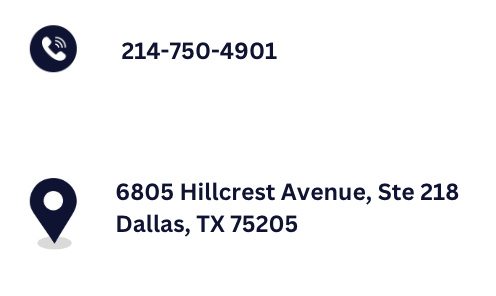Do you think you might need a root canal treatment, but you’re not sure?
Ever felt deep tooth pain that keeps you up at night? That’s a sign something’s wrong. Trying to enjoy your favorite foods or a cold drink turns into moments of dread. This throbbing pain is more than a discomfort; it’s like a constant alarm. It’s not just the pain, though. There are other signs you can’t ignore:
Swollen, sore gums. A tooth that doesn’t look like it used to. Cold treats like ice cream becoming your worst enemy. Tiny cracks and a weird pimple on your gums.
It sounds like a root canal is needed, doesn’t it? Thinking about it can make anyone anxious. But then I heard about Dr. Drew Randall’s expertise at Randall Dentistry in University, TX and Dallas TX. There’s hope for relief and a solution to this pain.
Take Our Smile Quiz! Start The Quiz
What is a Root Canal?
A root canal saves a tooth in serious trouble. Inside each tooth is the pulp, where the nerve and blood supply live. When this pulp gets infected or damaged, it causes severe pain. That’s where treatment helps.
During the treatment, a University Park Tx dentist or endodontist removes the damaged pulp from inside the tooth. They clean the space, disinfect it, and fill it with a special material. This removes the pain and protects the tooth from further damage.
Think of it like fixing a tree from the inside out, removing the damaged part, and filling it to keep it strong. That’s what a treatment does for your tooth.
Symptoms You Need A Root Canal
When you need a root canal, your tooth sends clear SOS signals. Here’s what to watch for:
- Throbbing Pain: Pain that keeps you awake or interrupts your day. It worsens when you bite down.
- Sensitivity to Hot and Cold: Lingering pain after drinking something hot or cold. Swollen, Tender Gums: Swelling and soreness around the troubled tooth.
- Discolored Tooth: One tooth looks darker than the others. Visible Damage: Cracks or chips can lead to infection, requiring a treatment.
- Gum Bumps: Small bumps on your gums near the painful tooth.
These symptoms are your mouth’s way of signaling something’s wrong beneath the surface. If you recognize any of these signs, it’s time for a check-up with your top Dentist in University Park TX.
How is a Root Canal Performed?
Dr. Randall uses advanced technology for precision and comfort during root canals. Here’s the process:
- Anesthesia: Dr. Randall numbs the area around the affected tooth with local anesthesia, ensuring a pain-free experience.
- Accessing the Tooth: He creates a small opening in the tooth’s crown for access.
- Removing the Pulp: Using specialized instruments, Dr. Randall removes the infected or damaged pulp.
- Cleaning and Shaping: The interior of the tooth is thoroughly cleaned and shaped.
- Filling the Tooth: The cleaned space is filled with a biocompatible material, ensuring it’s well-sealed.
- Sealing the Tooth: A high-quality sealant closes the opening, protecting the tooth from future infections. Restoration: Often, a treated tooth requires a crown for added protection and functionality.
Dr. Randall’s expertise ensures a comfortable procedure and a quicker recovery.
Take Our Smile Quiz! Start The Quiz
Our Root Canal Specialist, Dr. Drew Randall
A root canal with Dr. Drew Randall focuses on comfort and precision. Here’s what to expect:
- Consultation: It starts with a detailed exam. Dr. Randall uses advanced imaging to pinpoint the problem.
- Treatment Plan: You’ll get a custom plan tailored to your needs. The Procedure: On treatment day, you’ll receive numbing for comfort. Dr. Randall then removes the damaged pulp, cleans the tooth, and seals it.
- Recovery: Post-treatment, you’ll get clear aftercare instructions. Dr. Randall’s team is always available for any questions. Follow-Up: Dr. Randall checks on your recovery and tooth health, ensuring a successful outcome.
Choosing Dr. Randall means choosing expertise, advanced care, and a gentle approach for a comfortable treatment experience. Curious how much your treatment would be? Take our free survey to estimate you treatment cost today!
Schedule your free consultation today or call us at 469-489-5996!
Questions & Answers
What is a root canal?
A root canal is a dental procedure that treats infection at the center of a tooth (the pulp). It involves removing the damaged or infected pulp, cleaning and disinfecting the inside of the tooth, and filling and sealing it to prevent further infection.
How do I know if I need a root canal?
Signs you may need a treatment include severe tooth pain, prolonged sensitivity to hot or cold, swollen or tender gums, darkening of the tooth, or a persistent pimple on the gums.
Is a root canal painful?
Treatment are performed under local anesthesia, so you shouldn’t feel pain during the procedure. Modern techniques and anesthesia have made treatment much more comfortable than in the past.
How long does a root canal procedure take?
A root canal typically takes one to two visits, with each visit lasting about 60 to 90 minutes, depending on the complexity of the case.
What happens after a root canal?
After a treatment, your dentist will place a temporary filling. A follow-up visit is usually required to place a permanent crown or filling to protect the tooth and restore its function.
Can a root canal fail?
While treatment has a high success rate, they can occasionally fail due to factors like undetected cracks in the tooth, additional canals that were not treated, or new decay. In such cases, re-treatment or other dental procedures may be necessary.
What can I eat after treatment?
It’s best to avoid hard or chewy foods until the numbness wears off and the temporary filling is replaced. Stick to soft foods and avoid chewing with the treated tooth until it’s fully restored.
How long does a root canal last?
With proper care, a root canal-treated tooth can last a lifetime. Good oral hygiene practices and regular dental check-ups are essential to maintain the health of the treated tooth.
Is there an alternative treatment?
The primary alternative treatment is tooth extraction. However, saving your natural tooth with a root canal is usually preferable because it maintains your natural bite and prevents other teeth from shifting.
How much does a treatment cost?
The cost of treatment varies depending on the tooth’s location, the complexity of the procedure, and your dental insurance. Generally, molars are more expensive to treat than front teeth.
What should I do if I experience pain after a root canal?
Mild pain and sensitivity are normal for a few days after the procedure. Over-the-counter pain relievers can help manage this discomfort. If the pain is severe or persists, contact your dentist as it could indicate a problem.






